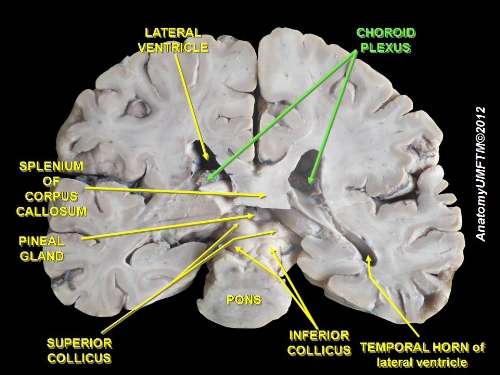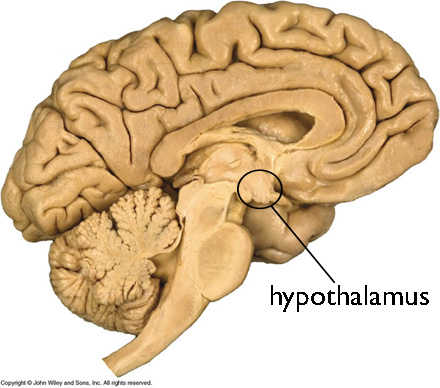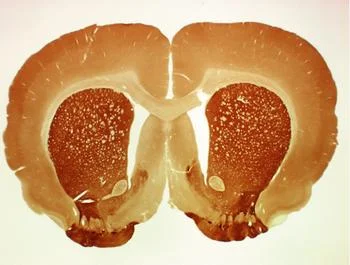Answer: The choroid plexus is a group of cells in the ventricles of the brain that function to produce cerebrospinal fluid.
The brain uses cerebrospinal fluid (CSF) to help maintain the extracellular gradient of ions, to make the brain more buoyant inside the skull, and to cushion the brain. The cerebrospinal fluid is mostly water, but has a high concentration of sodium (Na+) and chloride (Cl-) ions. It has a high osmolarity around 300 mOsm, making the brain very light inside the skull. Also, as a water based solution that surrounds the brain, it cushions the brain from being damaged when the head is moved back and forth.
The choroid plexus itself is made up of a series of blood vessels and a group of specialized glial cells called ependymal cells. This system lines the inside of the ventricular space of the brain with a few exceptions: there is no choroid plexus in the cerebral aqueduct or the anterior and posterior horns of the lateral ventricles. Otherwise, the ventricular space is generally equipped to produce cerebrospinal fluid.
The choroid plexus itself makes about 500 mL of CSF each day. The majority of this is reabsorbed by the body, so that at any given time, only about 150 mLs of CSF exists in the ventricles (Cerebrospinal fluid and lumbar puncture: a practical review).
Plasma from the blood is removed from the circulation by passing through capillaries in the choroid plexus. This removed water is the basis for the solute of the cerebrospinal fluid.
The choroid plexus also plays an important role in the immune system. Within the choroid plexus, there are macrophage cells that engulf and destroy invaders that have entered into the bloodstream. If toxins or foreign invaders enter the bloodstream, the choroid can decide to destroy them.










